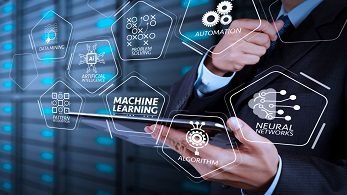Is embodied learning essential for artificial intelligence and machine learning courses?
Embodied learning is a form of learning that has been around for quite some time in the field of education. In this approach, one not only provides an intellectual manner of teaching but also involves the whole body in the process. Embodied learning is a form of a pedagogical technique that emphasizes the role of the body and emotions in learning rather than only the mind. The link between the body and the mind lies at the heart of embodied learning.
It is hard to imagine a more rudimentary approach to education than the traditional deep learning training technique taught in most machine learning certifications. It is based on giving information about the world in a random and repeating manner in the hopes that the learner, i.e. the neural network, would be able to separate and generate adequate abstractions of reality.
Embodied AI research and development is mostly focused on computer vision research ideas, in contrast to the first AI technology that relied on data and mathematical optimization. Natural Language Processing, Computer Vision using OpenCV and Convolutional Neural Networks, Reinforcement Learning and Robotics are all part of embodied learning or embodied AI. Using a realistic simulator in a three-dimensional environment, AI virtual robots and egocentric aides may be trained in an embodied environment before being used in the field.
How Does Embodied Learning Work?
Embodiment in AI refers to working with physical systems in the actual world, “robots”, in other terms.
Evolving AI researchers are shifting away from an algorithm-driven approach. Instead, they seek to get a thorough understanding of how biological systems operate before applying that knowledge to the creation of artificial systems like robots or intelligent technologies.
To interact with the real environment and to learn from their encounters, the robots use artificial intelligence, sensors that can collect data from the environment around them, and AI systems that can analyze and “learn” from this data.
Computer Vision
Computer vision is a branch of artificial intelligence that focuses on teaching computers to recognize and analyze visual and video input. Machine learning (ML) models may be used to identify and react to photos. An application of computer vision is unlocking the smartphone through face recognition.
Why This Course?
To position yourself for employment, study the principles of data analytics and machine learning and master the most commonly used data science tools and approaches, Imarticus’ certification in artificial intelligence & machine learning is one of the most comprehensive artificial intelligence courses out there. Students who successfully finish this program will be guaranteed interviews.
Over the years, Imarticus’ placement partners, numbering in the hundreds, have held recruitment drives and have hired students more than a thousand in number. Mock interviews will be conducted by professionals in the field; capstone projects, career mentorship, and other services are all part of the Career Services program. To help the students succeed in the job market, Imarticus devotes its time and attention to each candidate. You will learn how to improve your LinkedIn and GitHub accounts, as well as your CV.
Conclusion
Embodied AI’s early growth has been aided by recent advances in Internet AI. In order for robots to be able to successfully interact with the actual world, Embodied AI will need to surpass the achievements of Internet AI. Imarticus’ certification in artificial intelligence & machine learning, mentoring, and career services will boost your career to the next level if you are seeking a comprehensive program in artificial intelligence and machine learning. Learn AI from the best in the industry. There is no time like the present to get started on your journey to being a data science professional.

